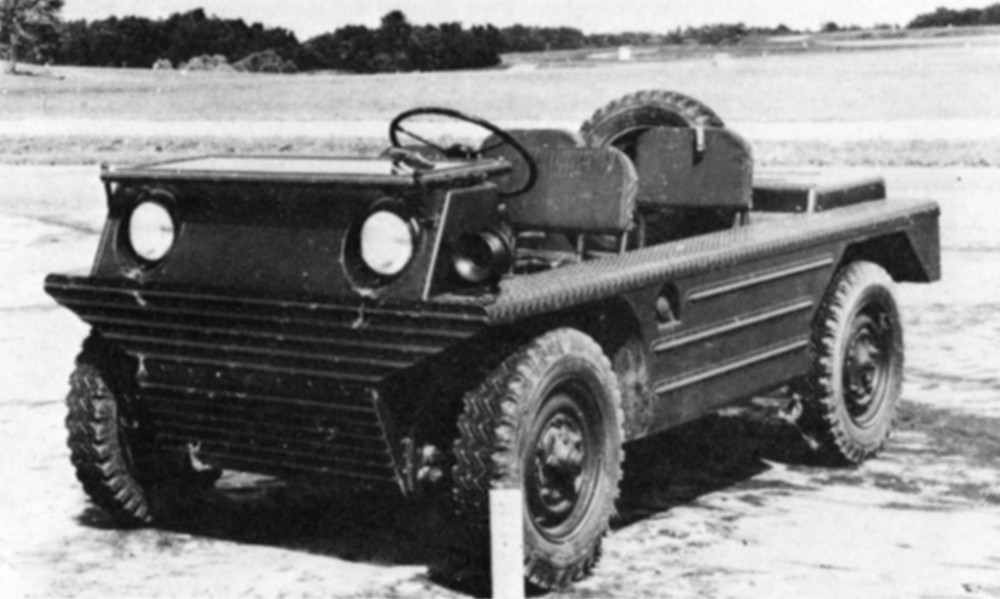The Flair’s story begins with Fletcher Aviation, founded in 1941 in Pasadena by three Fletcher brothers: Wendell, Frank, and Maurice. They initially formed the company to build a basic trainer for the US Army, and in 1953, Fletcher Aviation again attempted to secure a government contract, this time for an amphibious jeep. Wendell Fletcher, a Porsche enthusiast, decided to build an amphibious vehicle around a Porsche 356 four-cylinder air-cooled engine, attaching a Porsche transmission and suspension to an aluminum body. He made it light enough for air transport and added a special transfer case and front differential, giving the vehicle four-wheel drive. To make the Flair float, he adapted the jet-cooling principles of aeronautical engineer Otto Koppen, which Fletcher Aviation had already applied to its FD-25 Defender trainer. However, the system didn’t work very well as a propulsion system, so on water, simply turning the wheels propelled it. The Flair debuted in 1953 at the National Air Show in Dayton, Ohio, for Labor Day and was provided to the Army for testing. During testing, it performed well: waterproof and stable in water, it reached a speed of 2.2 mph on water and 68 mph on land, carrying up to 800 pounds of cargo. However, the Army ultimately rejected the Flair, which it had evaluated alongside the American Motors XM531 Muskrat and Willys XM433E1. The Flair then presumably returned to Fletcher, which briefly changed its name to Flair Aviation in the early 1960s before exiting the aircraft manufacturing business in 1966. Some sources note that Fletcher Aviation may have considered using the Flair as an agricultural vehicle, but these plans never came to fruition. At some point in its history, the Porsche engine was replaced with a Volkswagen one, perhaps to make it more appealing to foreign markets.
No Subscription? You’re missing out
Get immediate ad-free access to all our premium content.
Get Started



